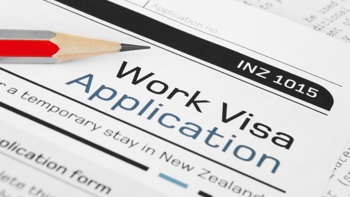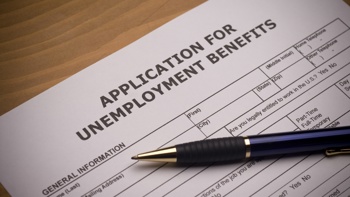
At DB Breweries, zero is a good number. The beer giant has joined engineering consultancy WSP Opus and parts of the banking sector to get its gender pay gap down to that - zero - and achieve pay equity.
Auckland-based DB reached that goal in July. That zero gap was down from 6.1 per cent in August last year and came after three-and-a-half years of working to close the gender discrepancy in pay.
Rebecca Mead, DB's manager of talent and organisational development, says closing the gap was a collective effort by the HR team.
"We analysed wages and salaries of all of our permanent people from all levels, right from our managing director to our shop floor roles," Mead says.
"We looked at it holistically. For us it was very intentional because we wanted to make sure it was sustained and simply became the way we work."
DB has tracked gradual reductions in pay discrepancies since 2015. The company works with job grades and every role is evaluated using the Hay Job Evaluation system to map out roles and its organisational structure, and it has yearly benchmark comparisons with peer groups to ensure its remuneration is equal and there are no gender-based discrepancies.
"Over the last three years we've revised all of our pay rates within those job grades. We worked really hard to make sure the full-time equivalent, wages and salary for our part-time people, are aligned with the job grade and their colleagues."
Practices it has implemented to close the gap include equal gender placement within teams, hiring equal numbers of men and women and standardising pay rates within job grades.
DB also reviews pay for employees returning to work after time off, to make sure their pay rates are in line with market standards.
"We made sure anyone coming back from parental leave, that we reviewed either their salary or their hourly rate, to make sure to keep them in line with market and that they're not disadvantaged at a really critically stage," she says.
Mead believes women's career progress often stalls when they return to the workforce after time off, which is one reason why a gap exists in New Zealand.
Closing the gender pay gap within the organisation was part of DB's wider plan for the future of work, and Mead says it has not been a challenge to do.
"We've got genuine support from within our business that it's the right thing to do.
"We want to pay people for the job as opposed to what gender they might be or any other thing that might potentially make a decision as to why someone should get paid more or less, apart from their skill, background or qualifications," she says.
"It's such an important thing for our company and for New Zealand as a whole."
/arc-anglerfish-syd-prod-nzme.s3.amazonaws.com/public/2RWBG45KF5BHFKDF3ZPJP5QDGY.jpg?width=0&height=0&mode=max)
Statistics NZ figures show the gender pay gap - defined as the difference in the median hourly earnings of men and women - was 9.2 per cent in the June quarter - the second-smallest gap recorded in about 20 years.
It was the second year in a row that median hourly earnings for women, on both wages and salaries, increased faster than men's pay. However, this country still has a way to go to be on par with Belgium, which has an average gap of 3.3 per cent, one of the lowest in the world.
New Zealand's gap is lower than Australia's, which sits at 14.6 per cent, but unlike Australia, this country does not have compulsory guidelines that require non-public employers with more than 100 staff to report on the gender composition of their workforce, equal remuneration between men and women and availability of flexible working.
In January, Iceland became the first country to enforce equal pay legislation. Within four years, companies that don't pay equally will receive daily fines.
Wellington-headquartered WSP Opus, an engineering consultancy, has also closed the gender pay gap within its organisation.
Managing director Ian Blair says the move was a no-brainer. "It's 2018 and we should be rewarding people fairly for doing the same work at the same level of performance in like-for-like roles. To do otherwise just isn't right," he says.
"I have two sons and two daughters and cannot imagine living in a world – or being part of a leadership team of an organisation – where I have to tell my daughters they get paid less than their brothers because of their gender."
We want to pay people for the job as opposed to what gender they might be or any other thing that might potentially make a decision as to why someone should get paid more or less.
This year WSP Opus undertook work to identify its gap, and found 3 per cent of its workforce were being underpaid. It then lifted the wages of the 60 employees affected to correct the discrepancy.
Blair says achieving pay equity was a milestone in the industry.
"We are not a diverse industry and we're not a diverse organisation. We're representative of the engineering industry: 12 per cent of the members of Engineering NZ are women and 9 per cent are technical leaders, so it's not surprising that our frontline workforce is only 26 per cent female."
Engineering firm AECOM New Zealand addressed its gender pay gap in 2015, but the number of women employed in its organisation and industry is far from equal.
It says pay is not the only, or biggest, barrier to retaining women in leadership roles.
Kirsten Patterson, chief executive of the Institute of Directors, says closing the country's gender pay gap is a complex issue and the way to resolve it will vary from company to company, and industry.
The first step, though, is to identify the pay gap within the organisation and the reason for it, she says. "Organisations need to understand that this is a key part of their responsibility in today's world," Patterson says. "[They need] to measure and report and treat this no differently to other issues in business."
The pay difference for non-executive directors, based on median annual payments, is 19.9 per cent - analysed across the public, private, not-for-profit and state sectors, according to the institute's 2018 Directors' Fees Report.
The annual median fee for a male non-executive director is $46,000, compared with $37,643 for a female non-executive director.
While male and female directors on the same board are paid the same fees, more men are represented in higher-paying commercial board roles than women, many of whom may be in lower paid not-for-profit governance roles.
/arc-anglerfish-syd-prod-nzme.s3.amazonaws.com/public/TVF76BOOUBANHIBE7MT4NP5ENQ.jpg)
"Diversity on boards and diversity of thought on boards is a primary issue for boards across the country," says Patterson.
"It's really important boards recognise and address any unconscious bias they might have when it comes to their appointment processes and recruiting," she says. "Leadership from the chair and deputy chair in creating inclusive cultures is needed so diversity of thought can be bought out in the boardroom."
Just 20 per cent of directors of NZX listed companies are women, and 29 companies had no women on their boards as of April this year.
New Zealand's largest bank, ANZ, has closed the pay gap between men and women in the same roles, but there are still more men in higher-paid roles.
And Westpac has recently introduced reporting software to pick up pay anomalies.
While the banking sector has put a lot of effort into gender equity, the same numbers of women and men are needed in top jobs for pay equity to be achieved.
Global Women chief executive Miranda Burdon says that is where the issue comes into play - for there to be no pay gap, there needs to be equal representation of women and men in an organisation's leadership roles.
"The most fundamental part in addressing this is ensuring people are paid like for like, the next step in this is ensuring that women and men are equally represented," Burdon says.
"Globally, there's significantly greater emphasis and a state of action occurring around the gender pay gap, and there's no question that has the attention of the private sector as much as the public sector."
For a long time, New Zealanders sincerely did not believe there was such a gap, Burdon says.
Most people don't take down wages of one to put up the wages of another.
Paying men and women equally for the same work has been a legal requirement for 46 years under the Equal Pay Act.
"When we say there is a 9.2 per cent gap, it's a 9.2 per cent, average, gap.
"One of the inherent issues in New Zealand is the fact that there's a lower representation of women than men in leadership roles.
"As long as that continues there will continue to be a gap. There's also extensive research that says even when women get to senior roles they are not paid like for like."
Research estimates that 80 per cent of the causes or factors behind pay inequity are unknown, and attributed to human biases such as: negotiating behaviour, the way people identify pay rates, such as what they were paid previously; and speaking about the value of a person rather than the role.
Burdon says companies can easily close the pay gap - they just need to budget for it.
"First you have to identify it, then you have to address it.
"Most people don't take down the wages of one to put up the wages of another. [But] it is a conscious decision that organisations need to make," she says.
"It's about fairness, choice, it's about equal opportunity."
Take your Radio, Podcasts and Music with you









